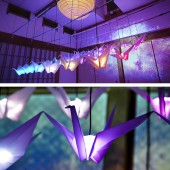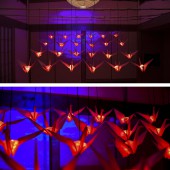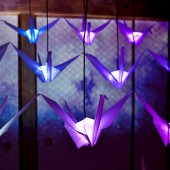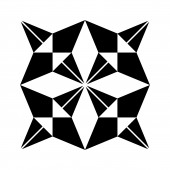Orizuru Room Interactive Lighting by Atsushi Joe Umeda |
Home > Winners > #69743 |
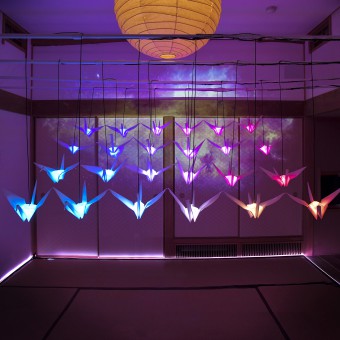 |
|
||||
| DESIGN DETAILS | |||||
| DESIGN NAME: Orizuru Room PRIMARY FUNCTION: Interactive Lighting INSPIRATION: Manazuru was named after a crane due to the fact that its shape on a map very much resembles a crane. Our goal was making an installation that symbolized Manazuru, so we decided to feature origami cranes for our art work. We placed importance in collaborating on this project with locals in Manazuru and so we asked the Orizuru Association and a grand master to support us and we made origami cranes together. "Orizuru" means a crane made with origami. UNIQUE PROPERTIES / PROJECT DESCRIPTION: "Orizuru Room" is a perfectly executed audio-reactive installation featured traditional Japanese origami. We collaborated with a grand master of origami from Manazuru, Japan. "Orizuru Room" was a part of a hackathon project at the art event "Manazuru Jack Installation". The town was "jacked" with many art works. OPERATION / FLOW / INTERACTION: "Orizuru Room" is an audio-reactive installation. We played audio-visual live show for 3 minutes for each performance. Between the performance, it reacted on the audience automatically. If someone comes close to the crane, the color was changed and music is played. PROJECT DURATION AND LOCATION: "Orizuru Room" was a part of a hackathon at the art event "Manazuru Jack Installation" which is took place on May 4th 2018. Manazuru is a port town about 100km to the west of Tokyo, and many places in the town were "jacked" with art works. We hacked traditional Japanese tea room in "Manazuru Community Center". FITS BEST INTO CATEGORY: Lighting Products and Fixtures Design |
PRODUCTION / REALIZATION TECHNOLOGY: We used 24 LEDs for cranes, LED strip lights on the floor, projector for the back wall and Kinect sensor for the interaction. We programed this system by TouchDesigner, which is visual development platform. We sent image data through serial communication for the cranes and DMX for the floor to realize real time interaction. SPECIFICATIONS / TECHNICAL PROPERTIES: Width 3.6 m x Depth 3.6 m x Height 2.5 m TAGS: installation, lighting, led, animation, public art, architecture, Japan, origam, audio reactive RESEARCH ABSTRACT: The quality of origami paper used would very much affect the overall visual of our installation an so we tested many papers of varying texture and thickness. We were looking for a material that was durable but also translucent and so decided upon a thick stock of translucent drawing paper. And we did some previsualization with a 3D software to help us decide on the size of cranes and how to best display them in a traditional Japanese tea room. CHALLENGE: To control 24 LEDs inside the cranes through serial communication, the most popular microcontroller "Arduino" was not performing well in Frames Per Second. The lighting was gradually delayed and didn't match the audio. So we adopted 4 "Fadecandies&qu ADDED DATE: 2018-07-09 08:29:27 TEAM MEMBERS (3) : Creative Director : Atsushi Kobayashi, Technical Director : Joe Ohara and Photographer : Kenta Umeda IMAGE CREDITS: Image #1: Orizuru Room_1 Image #2: Orizuru Room_2 Image #3: Orizuru Room_3 Image #4: Orizuru Room_4 Image #5: Orizuru Room_5 |
||||
| Visit the following page to learn more: https://vimeo.com/user84830932 | |||||
| AWARD DETAILS | |
 |
Orizuru Room Interactive Lighting by Atsushi Joe Umeda is Winner in Lighting Products and Fixtures Design Category, 2018 - 2019.· Press Members: Login or Register to request an exclusive interview with Atsushi Joe Umeda. · Click here to register inorder to view the profile and other works by Atsushi Joe Umeda. |
| SOCIAL |
| + Add to Likes / Favorites | Send to My Email | Comment | Testimonials | View Press-Release | Press Kit |

